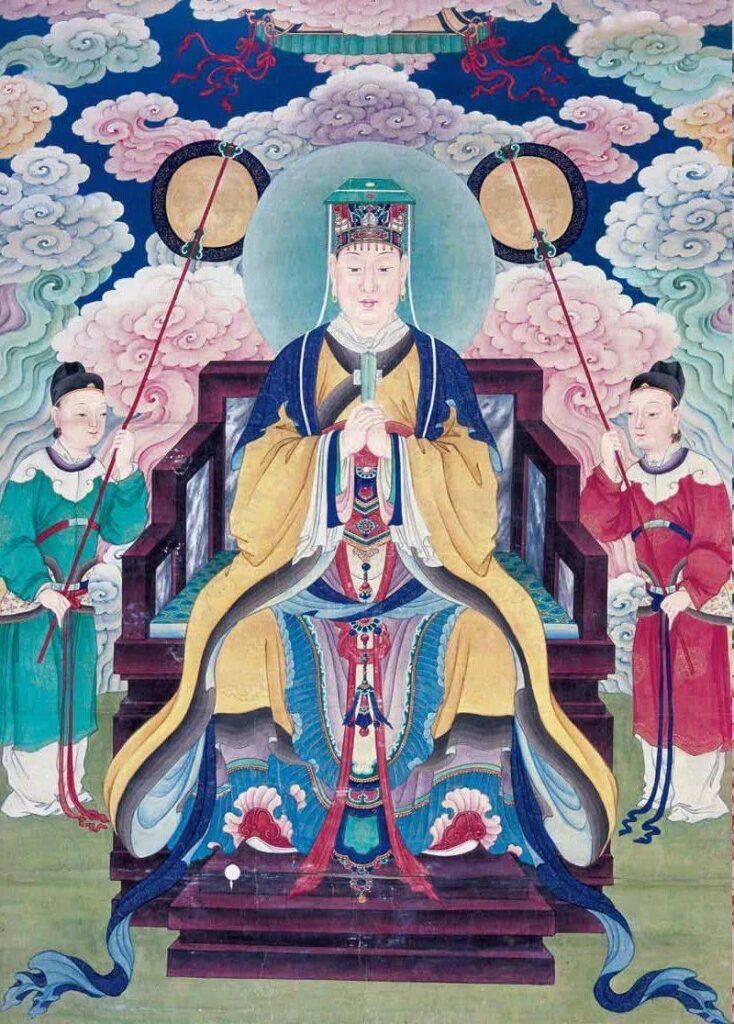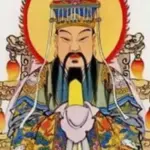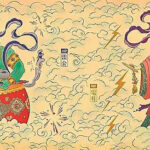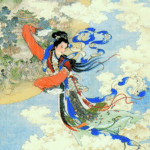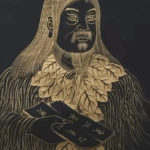In Chinese mythology Bixia (碧霞) is a fertility goddess responsible for the dawn, and a guardian of mothers and young children. Her full name is Bìxiá Yuánjūn (碧霞元君) which means “Her Majesty of the Blue Dawn,” but she is most often referred to simply as Bìxiá (碧霞).
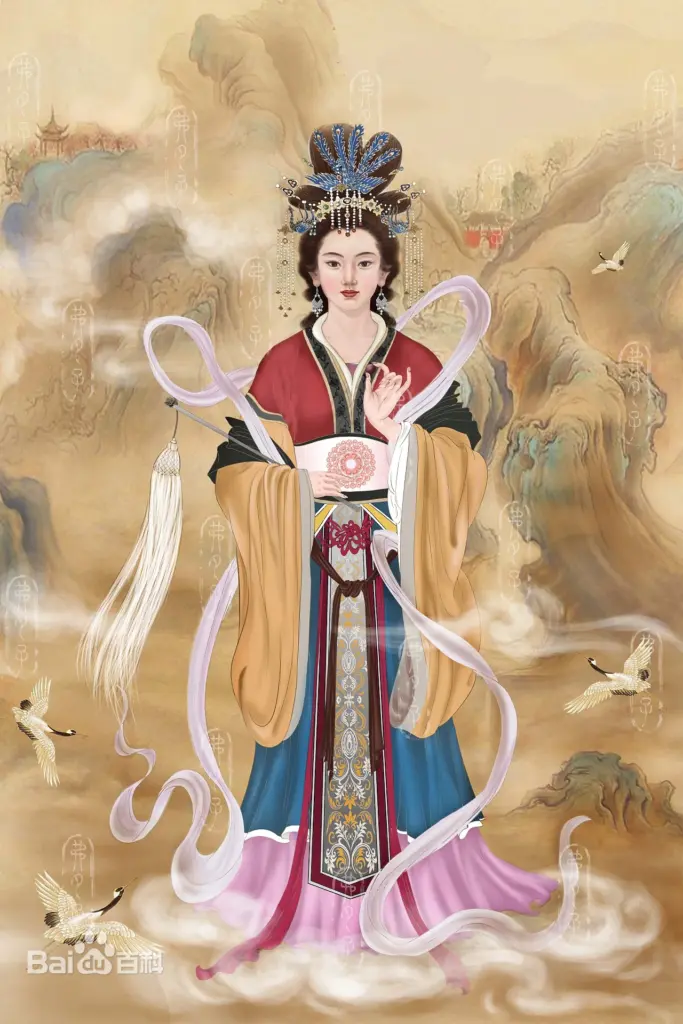
Etymology
In addition to her formal title, Bixia has a second name, Hòutǔ (后土), which is comprised of the character for “queen,” hòu (后), and tǔ (土), which means “Earth.” This second name translates as “Queen of the Earth.” She’s also colloquially referred to as Tiānxiān Niángniáng (天仙娘娘), or “Heavenly Immortal Lady.”
During the Great Flood of China, when the flow of the Yellow River was catastrophically diverted from its usual course, Bixia was the deity who set the river back into place, saving the lives of many people in China. She is most commonly worshiped in the northern regions of China, and her identity is sometimes conflated with that of Xiwangmu (西王母).
Name and title
The name Bixia Yuanjun has been variously rendered in English-language sources, including “Sovereign of the Clouds of Dawn,” “The Primordial Goddess of the Morning Clouds,” and “Princess of the Azure Clouds.”
She has also been accorded a number of honorific titles, such as Tianxian Yünu (天仙玉女; lit. “Heavenly Immortal Jade Maiden”) and Tianxian Shengmu (天仙聖母; “Heavenly Immortal Holy Mother”).
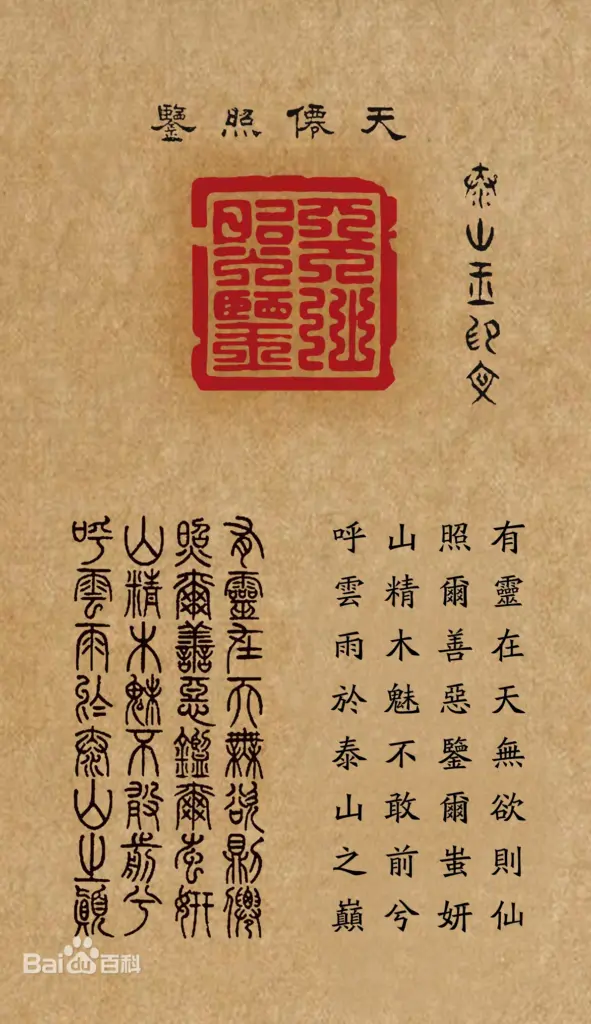
In popular tradition, she is more commonly known by epithets such as Tianxian Niangniang (天仙娘娘; “Our Lady Heavenly Immortal”), Taishan Niangniang (泰山娘娘; “Our Lady of Mount Tai”), Taishan Laomu (泰山老母; “Grand Matron of Mount Tai”), or simply Lao Nainai (老奶奶; “Old Granny”).
Bixia Yuanjun is the Taoist goddess venerated in association with Mount Tai in Shandong Province. She is revered as a deity of dawn, childbirth, and destiny. Tradition holds that she governs human lifespans, presides over the judgment of souls, and responds to prayers for children—particularly male heirs—thus being believed to bestow male offspring upon devoted households.
Over time, Bixia Yuanjun became syncretized with various maternal deities and came to occupy a role in northern China analogous to that of the bodhisattva Guanyin (Avalokiteśvara), whose worship predominated in central and southern regions.
Legends
A multitude of legends surround Bixia Yuanjun, who is regarded as a composite figure shaped by multiple historical and mythical identities. Some narratives describe her as the daughter of Dongyue Dadi, the Grand Emperor of Mount Tai and sovereign of the underworld. Other traditions suggest she is linked to Yanluo (閻羅), the underworld judge and subordinate of Dongyue Dadi in the pantheon of Chinese folk religion. Conversely, late Ming sources present a more humanized origin, asserting that Taishan Niangniang was born to a commoner.
According to a tradition perpetuated by a 1635 guidebook, a weathered statue of the goddess was discovered atop Mount Tai in the year 1008 by Emperor Zhenzong of the Song dynasty.
Her official hagiography is preserved in the History of Mount Tai, a text compiled by Zha Zhilong (1554–1586) and incorporated into the Taoist Canon during the reign of the Wanli Emperor (1573–1620), with the compilation printed in 1607.
During the Ming and early Qing dynasties, Taishan Niangniang emerged as one of the most widely venerated deities in northern China. Her cult was actively promoted by the city of Tai’an in Shandong Province and extended as far south as the Lower Yangzi region. Her worship also received considerable patronage from the imperial court, particularly during the Ming and Qing periods, leaving a profound cultural imprint on northern China.
As the goddess of dawn, Bixia Yuanjun is believed to usher in the birth of each new day from her ethereal abode among the clouds. As the goddess of childbirth, she presides over the arrival of new life, ordaining destinies and bestowing blessings. Devotees, particularly women desiring children, continue to venerate her at the Temple of the Purple Dawn at the summit of Mount Tai.
Temples
The Palace of the Clouds of Dawn (Bixia Gong), a shrine erected atop Mount Tai during the Ming dynasty, remains an enduring center of pilgrimage. Today, her worship is still widespread, with temples dedicated to Bixia Yuanjun found across China. In Beijing, she is honored at the Temple of the Eastern Peak (Dongyue Miao), which houses a dedicated hall, as well as in the White Cloud Monastery (Baiyun Guan).
In Taoist visual culture, Bixia Yuanjun is frequently depicted accompanied by a retinue of nine attendant goddesses, including Zhusheng Niangniang, the goddess of fertility, and Yanguang Niangniang, the goddess of vision.
In northern China, devotion to Bixia Yuanjun is especially fervent. She is widely regarded as a responsive deity—one whose blessings are believed to be granted upon sincere prayer. The Precious Scroll of the Lady of Mount Tai (《泰山娘娘宝卷》), which recounts the miraculous deeds of Taishan Niangniang, enjoys broad popularity in Chinese folk culture. Taoism has also incorporated this scripture into its canonical texts.
The title “Bixia Yuanjun” is not exclusively associated with the Lady of Mount Tai. In southern China, the Heavenly Consort Shunyi (Tianfei Shunyi Furen) is also referred to by this honorific. Furthermore, the classic novel Investiture of the Gods (《封神演义》) describes Yu Hualong as the deity responsible for smallpox, also bearing the name Bixia Yuanjun. It was only in more recent history that the title Bixia Yuanjun became uniquely identified with the Lady of Mount Tai.
At the heart of Bixia Yuanjun’s cult lies the doctrine of “sovereignty over birth.” Her principal sacred site is located on Mount Tai in the city of Tai’an, in northern China. Mount Tai, revered as the eastern peak (Dongyue) of the Five Sacred Mountains (Wuyue), is one of the most prominent mountains in Taoism.
The term “Tai” in Mount Tai is rich in symbolic meaning. The Book of Changes (Zhouyi, hexagram Tai) states: “When Heaven and Earth unite, all things flourish.” The Fengsu Tongyi explains, “Mount Tai is also called Daizong; Dai means ‘beginning,’ and Zong means ‘supreme.’ It marks the origin of all things, the interchange of yin and yang, and is therefore the chief among the Five Sacred Peaks.”
Among these five peaks, Mount Tai, the eastern mountain, corresponds to the direction of sunrise. In the Five Elements (Wuxing), the East is associated with wood; in the Four Seasons, it represents spring; among the Five Constants, it stands for benevolence (ren); in the Eight Trigrams, it aligns with Zhen; and among the Twenty-Eight Lunar Mansions, it belongs to the Azure Dragon.
The character for “East” (东) is derived from “wood” (木), with the sun (日) at its center. In oracle bone script, “wood” and “mulberry” (桑) were interchangeable, giving rise to the myth of the sun rising from the Fusang tree. As stated in the Book of Rites (Liji): “The word ‘spring’ (chun) signifies stirring—it is that which gives rise to all living things.” Benevolence (ren) is regarded as the greatest virtue of Heaven and Earth. Zhen and the Azure Dragon together represent the place where emperors are born and ascend.
Thus, the concept of the East as the source of life becomes concretely embodied in Mount Tai, which came to symbolize not only the “supreme virtue of Heaven and Earth” but also “the birthplace of emperors and the site of their ascension.”

